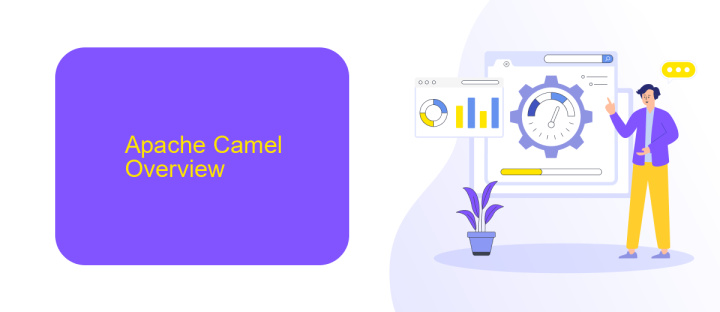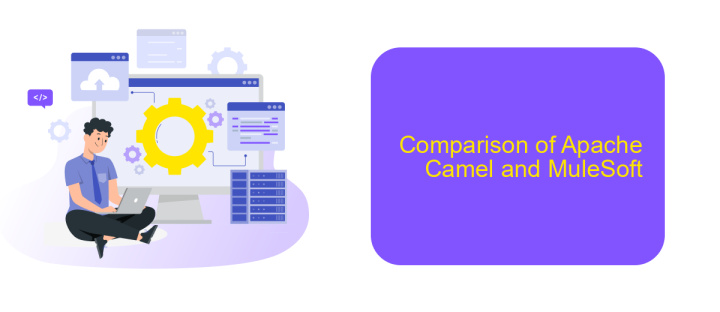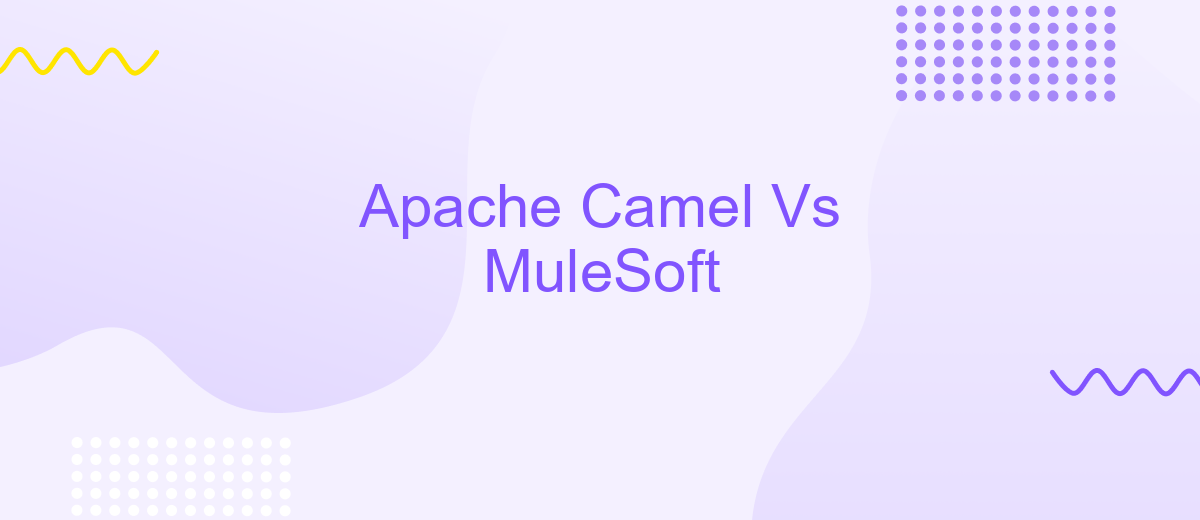Apache Camel Vs MuleSoft
In the realm of enterprise integration, choosing the right tool can significantly impact your project's success. Apache Camel and MuleSoft are two leading contenders, each offering robust solutions for connecting diverse systems. This article delves into a comparative analysis of Apache Camel and MuleSoft, examining their features, strengths, and ideal use cases to help you make an informed decision.
Introduction
When it comes to integration platforms, Apache Camel and MuleSoft are two of the most popular options available. Both offer robust solutions for connecting various systems, applications, and services, but they cater to slightly different needs and use cases. Understanding the key differences between these platforms can help businesses make an informed decision about which one to implement for their specific requirements.
- Apache Camel: An open-source integration framework that provides a versatile and lightweight solution for routing and mediation rules.
- MuleSoft: A comprehensive integration platform that offers extensive features for building, deploying, and managing APIs and integrations at scale.
- ApiX-Drive: A service that simplifies the process of setting up integrations between various applications, making it easier for businesses to automate workflows without extensive technical expertise.
Choosing the right integration platform involves evaluating factors such as scalability, ease of use, and the specific needs of your organization. While Apache Camel is ideal for those who prefer an open-source and highly customizable solution, MuleSoft provides a more feature-rich and enterprise-grade platform. Additionally, services like ApiX-Drive can further streamline the integration process, enabling businesses to achieve seamless connectivity with minimal effort.
Apache Camel Overview

Apache Camel is an open-source integration framework that provides a versatile and powerful platform for integrating various systems and technologies. Developed by the Apache Software Foundation, Camel leverages Enterprise Integration Patterns (EIPs) to facilitate the development of complex integration solutions. It supports a wide range of protocols and data formats, making it a suitable choice for diverse integration scenarios. With its simple domain-specific language (DSL) and extensive component library, Apache Camel allows developers to create robust integration routes with minimal effort.
One of the key advantages of Apache Camel is its flexibility and ease of use. It can be embedded in various runtime environments, including Spring Boot, Quarkus, and standalone Java applications. Additionally, Camel's integration capabilities can be enhanced with services like ApiX-Drive, which offers seamless connectivity between different applications and services without the need for extensive coding. This makes it an excellent choice for organizations looking to streamline their integration processes and improve operational efficiency.
MuleSoft Overview

MuleSoft is a widely recognized integration platform that enables businesses to connect applications, data, and devices seamlessly. It provides a comprehensive suite of tools to design, build, and manage APIs and integrations. MuleSoft’s Anypoint Platform is a robust solution that supports various integration patterns, making it a versatile choice for enterprises looking to streamline their operations.
- API Management: MuleSoft offers extensive API management capabilities, allowing businesses to create, publish, and secure APIs efficiently.
- Data Integration: The platform supports data integration from multiple sources, ensuring that data flows smoothly across different systems.
- Cloud Integration: MuleSoft facilitates cloud-to-cloud and cloud-to-on-premises integrations, providing flexibility and scalability for modern enterprises.
- Reusable Assets: With MuleSoft, users can leverage reusable assets and connectors, accelerating the development process and reducing time-to-market.
Additionally, services like ApiX-Drive can complement MuleSoft by providing no-code integration solutions that further simplify the process of connecting various applications and services. This combination allows businesses to achieve efficient and scalable integrations, enhancing their overall digital transformation journey.
Comparison of Apache Camel and MuleSoft

Apache Camel and MuleSoft are two prominent integration platforms that facilitate seamless data flow between different systems. Apache Camel is an open-source integration framework that provides a rule-based routing and mediation engine, whereas MuleSoft offers a comprehensive integration platform as a service (iPaaS) with extensive capabilities for API management and application integration.
One of the key differences between Apache Camel and MuleSoft lies in their approach to integration. Apache Camel relies on Enterprise Integration Patterns (EIPs) to define routing and mediation rules, making it highly flexible and adaptable. MuleSoft, on the other hand, provides a more structured environment with pre-built connectors and templates, which can accelerate the integration process.
- Flexibility: Apache Camel offers high flexibility with custom routing rules.
- Ease of Use: MuleSoft provides user-friendly tools and pre-built connectors.
- Scalability: Both platforms are scalable, but MuleSoft's cloud-based iPaaS offers easier scaling options.
- Cost: Apache Camel is open-source, while MuleSoft requires a subscription.
When selecting between Apache Camel and MuleSoft, consider your organization's specific needs, such as the complexity of integrations, budget constraints, and required scalability. For businesses looking for a simpler integration solution, services like ApiX-Drive can offer an alternative with easy-to-use tools for connecting various applications without extensive coding.
Conclusion
In conclusion, both Apache Camel and MuleSoft offer robust solutions for integration needs, each with its own strengths. Apache Camel excels in its lightweight and flexible approach, making it ideal for developers who prefer a coding-centric environment. Its extensive library of components and enterprise integration patterns ensures that it can handle a variety of integration scenarios efficiently.
On the other hand, MuleSoft stands out with its user-friendly interface and comprehensive suite of tools, which simplify the integration process for businesses. Its strong focus on API management and the ability to handle complex integrations make it a preferred choice for larger enterprises. Additionally, services like ApiX-Drive can further enhance integration efforts by providing seamless automation and connectivity between different platforms, thus streamlining workflows and boosting productivity. Ultimately, the choice between Apache Camel and MuleSoft depends on the specific requirements and resources of the organization.
- Automate the work of an online store or landing
- Empower through integration
- Don't spend money on programmers and integrators
- Save time by automating routine tasks
FAQ
What are the main differences between Apache Camel and MuleSoft?
Which one is better for small to medium-sized businesses?
How does the learning curve compare between Apache Camel and MuleSoft?
Can Apache Camel and MuleSoft be used together?
What are some alternatives for integrating various applications and automating workflows?
Apix-Drive is a universal tool that will quickly streamline any workflow, freeing you from routine and possible financial losses. Try ApiX-Drive in action and see how useful it is for you personally. In the meantime, when you are setting up connections between systems, think about where you are investing your free time, because now you will have much more of it.


